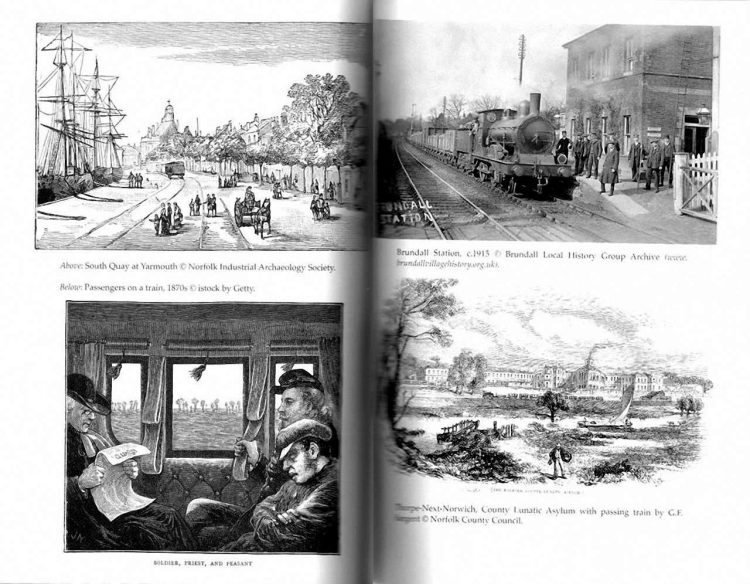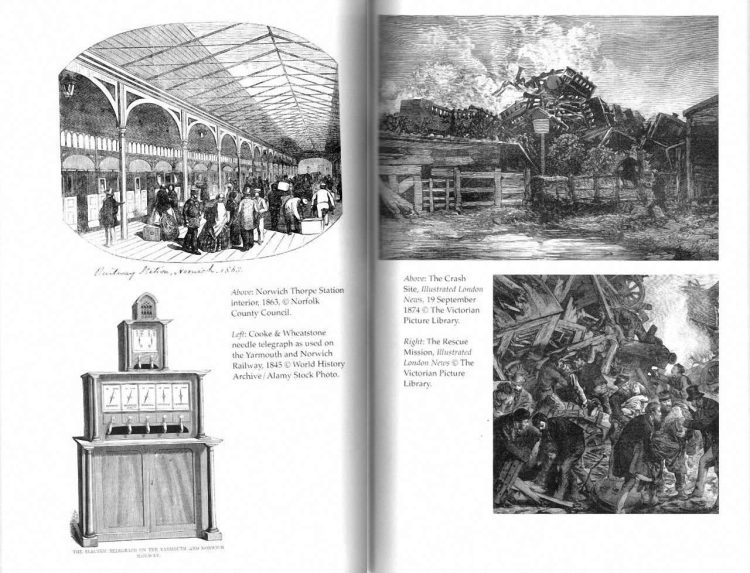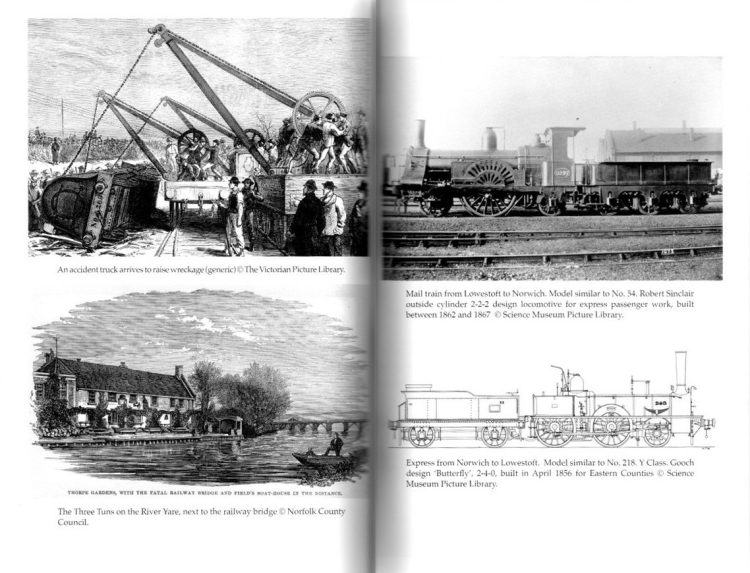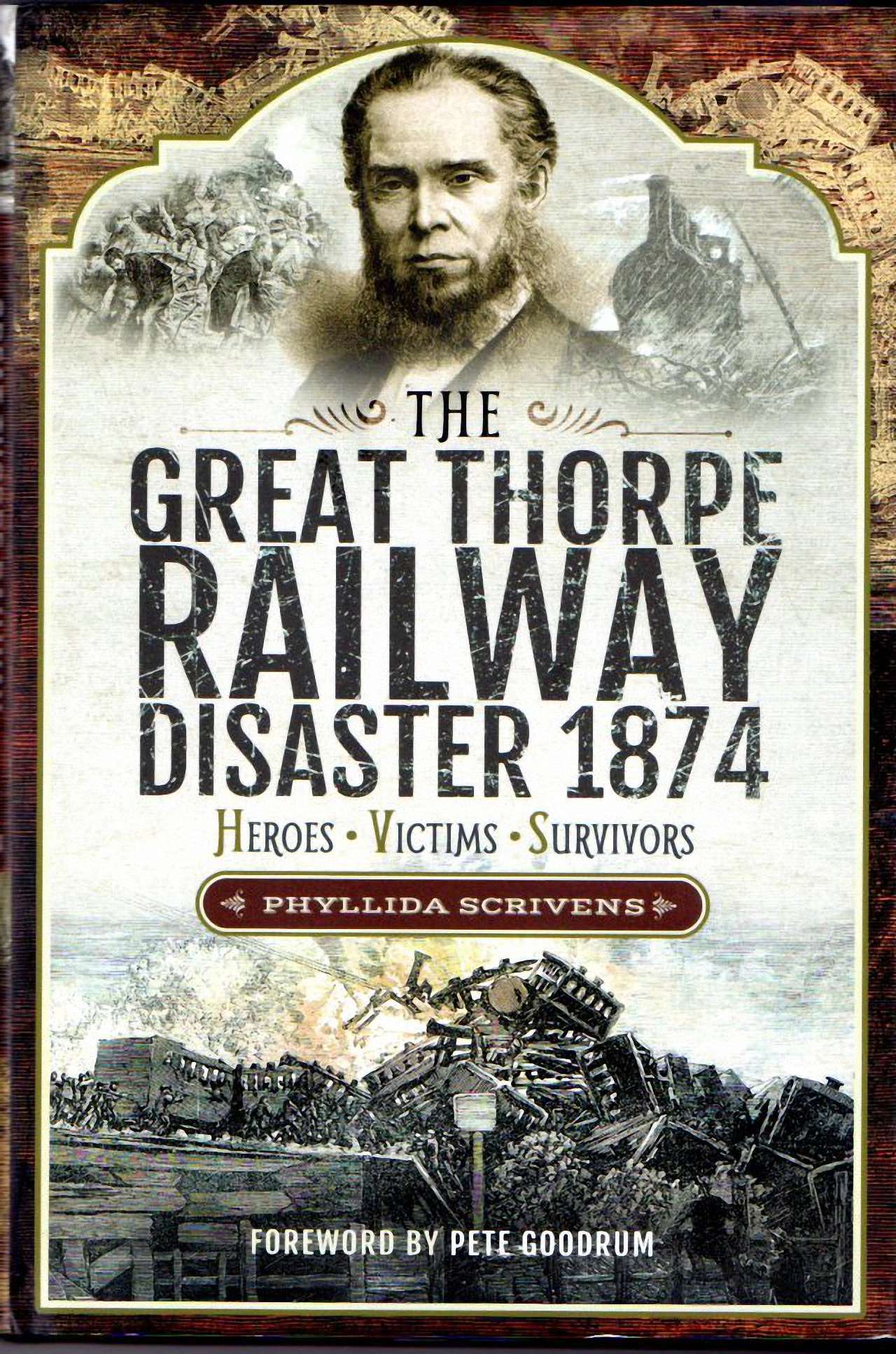Published in September 2021, this book from publishers Pen & Sword provides an account of the lives of the people who were killed, injured, or otherwise directly affected by the railway disaster just outside Norwich in 1874.
Written by Phyllida Scrivens, this hardback book measures around 24.2 cm x 16.4 cm, has 216 pages of text and a 16-page section of contemporary and modern black-and-white illustrations. It has a published price of £19.99 although Pen & Sword currently has it on offer at £13.99, and at the time of writing it can be obtained from Amazon for around £15.
There are 13 chapters titled: The Opening of the Yarmouth and Norwich Railway; Thirty Years Later; Collision Course; Impact; The Days Following; The Norfolk and Norwich Hospital; The Doctors; The Final Four Victims; Inquests, Board of Trade Inquiry and Manslaughter Trial; Compensation Cases Spring 1875; Heroes,; Survivors; and Consequences or Lessons Learned.
The accident happened on Thursday, 10th September 1874, and resulted in the deaths of 25 people. Trains left Norwich and Great Yarmouth that evening and met head-on at Thorpe St Andrew, two miles east of Norwich.
Much of the book is taken up with great detail about the passengers caught up in the accident, or by later events when the people had to come to terms with how their lives changed forever.
Although the book explains in detail exactly how the collision occurred and its aftermath, it concentrates more on the people involved rather than the crash itself. Because the author has chosen to present pictures of the people involved in the disaster, details of the events leading up to the collision and its aftermath are rather lost amongst stories of human interest.
Chapter 3 is titled “Collision Course” and I was expecting to read a description of the lead up to the collision. The chapter is 40 pages long, and only in the last two pages is there any hint of an impending collision, the previous 38 are filled with pen-pictures about passengers on the trains.
There is a description of the actual impact in Chapter 4, “Impact”, but as in Chapter 3, there are only two pages devoted to the crash while the rest of the chapter is more concerned with people who were affected by the crash.
The book does show that behind the dry history of a disaster are real people, devastated families, mothers with fatherless children, parents with lost children, and businesses that have lost their owners resulting in workers without a job and without any income.
Perhaps the most important outcome of the accident was the adoption of the Tyler Tablet System, which protected trains on single-track lines for the next 120 years.
The pages below are representative of the 16-page illustrations section. The lower-left illustration shows a typical compartment, although the furnishing would appear to show it to be a first-class compartment. The lower-right illustration shows the lunatic asylum that was close to the scene of the accident.

Although the right-hand page below depicts the crash with line drawings rather than photographs, the illustrations paint vivid pictures of the aftermath of the crash.

The lop-left photo below shows a typical method of recovering derailed rolling stock in the 1870s, although given the horrific pile-up it wouldn’t have been as straightforward as shown here. On the right-hand page are examples of the types of locomotive involved in the crash.

In summary, this is a well-written and easily readable account of human interest stories that accident reports themselves do not relate.
If you are looking for an account of the lives of the people who were killed, injured or otherwise directly affected by the Thorpe railway disaster in 1874, this book is for you. If you are interested in the circumstances leading up to the crash, and what happened before the trains collided and afterward, then although the details are in the book, they are lost in the dozens of human interest stories.
A good book if you are a follower of Local History and Railways, what you don’t get with this book is a lucid account of why and how the disaster happened and what the Board of Trade enquiry found.
The book is available to purchase from Amazon and from Pen & Sword.
We would like to thank Pen & Sword for providing RailAdvent with a copy of the book for review.






Responses